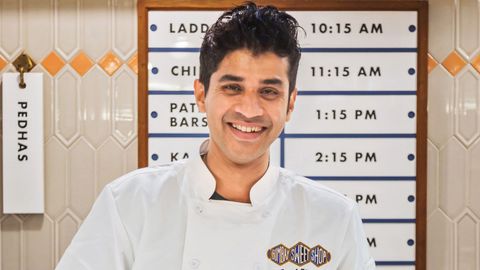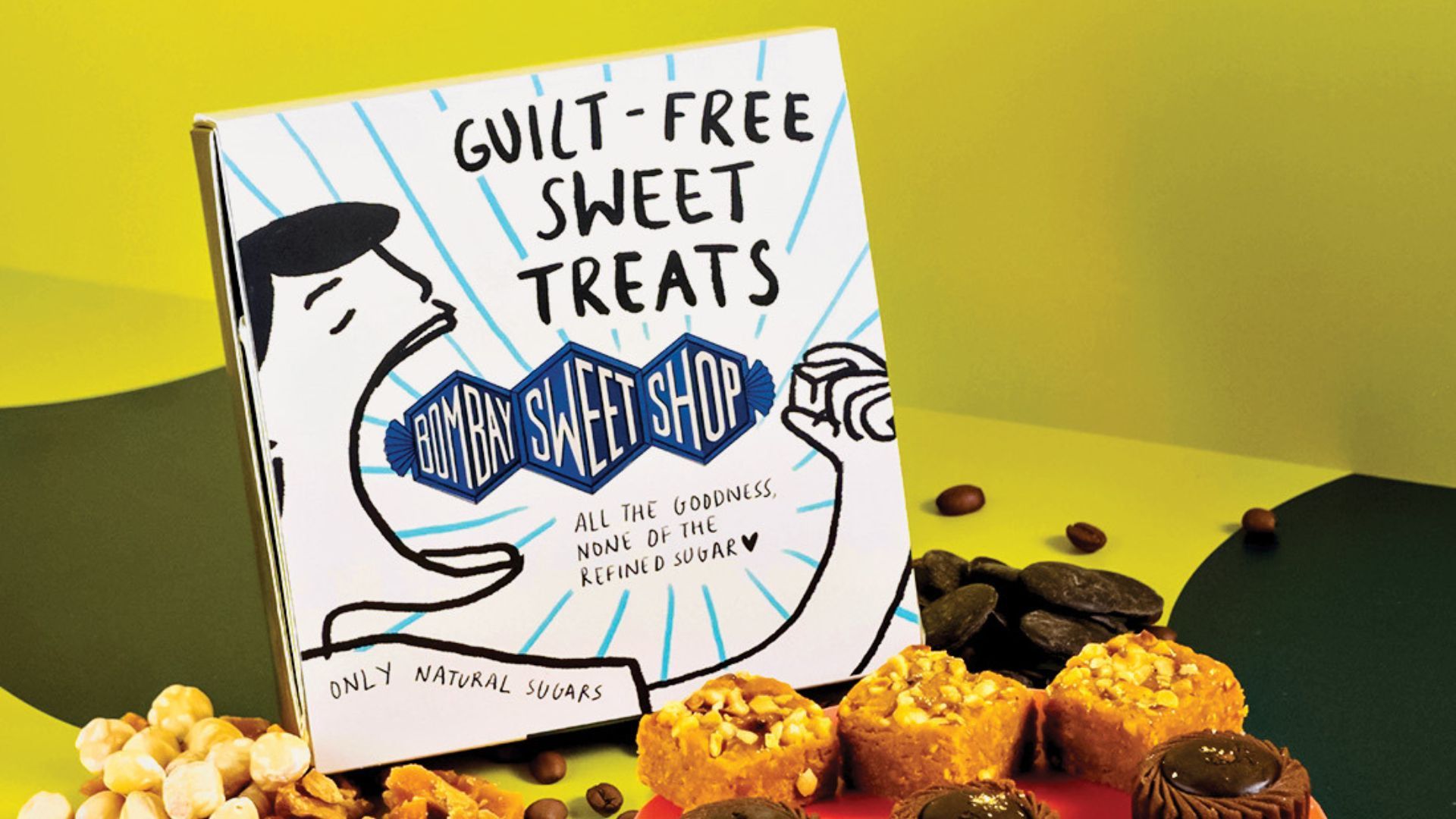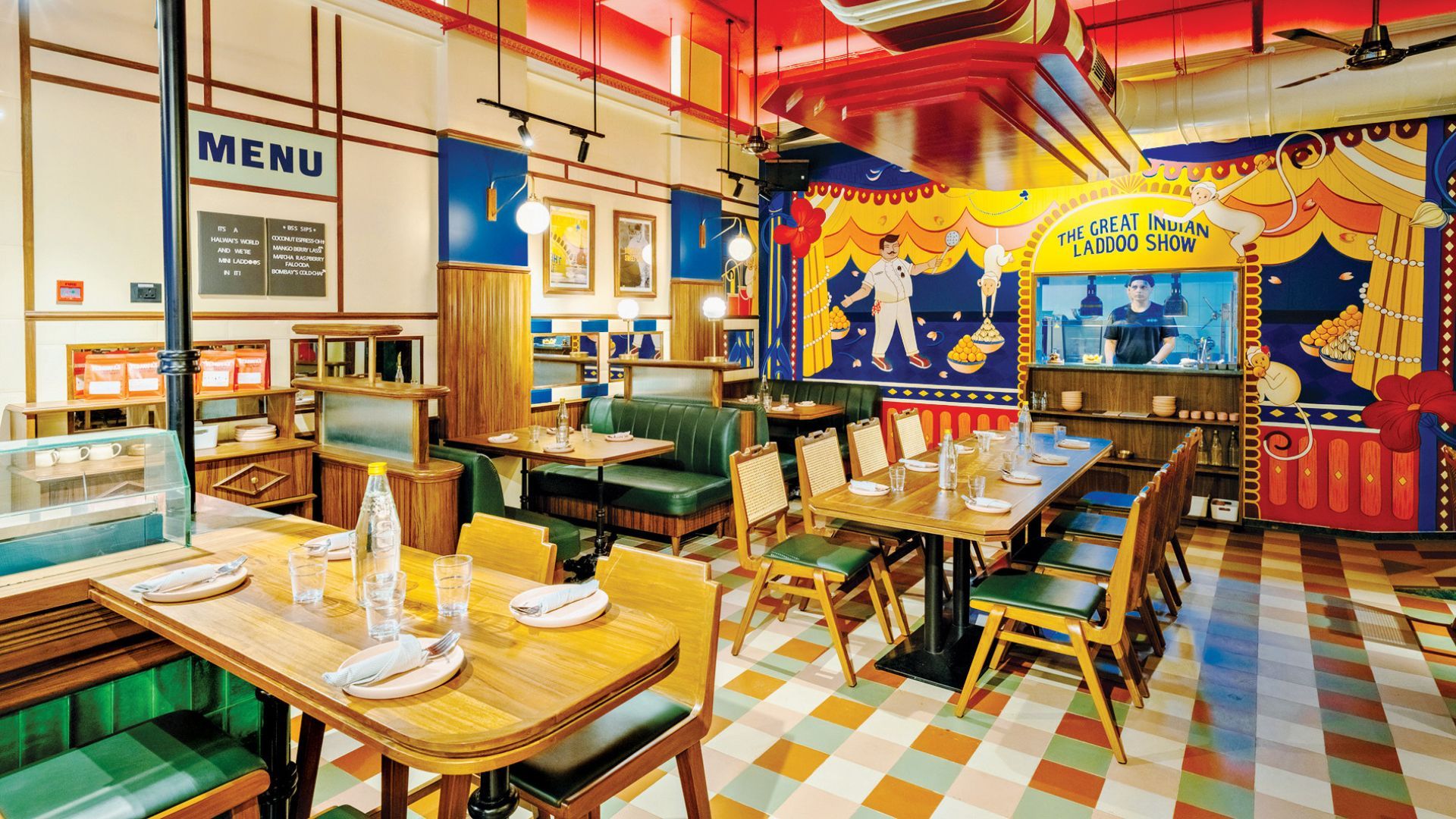
Photo Credit: Girish Nayak
From peeling pumpkins in a sweet shop courtyard in Udupi to reimagining mithai at one of India’s most exciting modern dessert brands, Girish Nayak’s journey is a testament to quiet craftsmanship and relentless curiosity. The Chief Mithaiwala at Bombay Sweet Shop talks to Travel+Leisure India & South Asia about learning by hand, bridging Indian tradition with French technique, and why mithai is finally having its long-overdue moment in the culinary spotlight.
Excerpts From The Interview With Girish Nayak
T+L India: Your first job was at a sweet shop in Udupi in 2006. What did you learn there?
Girish Nayak: I was turning 21, just out of college. My mom insisted I spend time learning about the sweets from our own Konkani community, so she sent me to work at a small, family-run place called Kamath Sweets in Udupi that’s been around for generations. I worked there for about eight months. The day would start at 6 a.m., and my first task was prepping ingredients— mostly peeling and cutting kushmand (ash gourd or white pumpkin) for the pumpkin halwa. After that, I would move help stir and cook the halwas.
We made everything from wheat, banana, and jackfruit halwas to Mysore Pak, laddus, and satta— which is like Balushahi. Everything was made in the courtyard of their home, using traditional tools and techniques, nothing was measured; there were no thermometers or timers. You learnt by watching and feeling. That time taught me how physical the craft really is. The scale, the heat, the repetitive motion, it’s intense.
T+L India: From a sweet shop in Udupi to working under chef Johnny Iuzzini at Jean Georges in New York—the range is quite broad. How did learning classic French desserts enhance your culinary school learnings?
 Bombay Sweet Shop’s packaging and presentation are as thoughtful as the sweets themselves.
Bombay Sweet Shop’s packaging and presentation are as thoughtful as the sweets themselves.
Girish Nayak: Yes, the range is quite broad, but both ends of that spectrum taught me different things that come together in what I do today. The Culinary Institute of America gave me a solid foundation in pastry. Even before that, in India, our culinary schools expose you to some Western basics, but the CIA really drilled in the structure, precision, and science behind pastry.
Working in chef Johnny Iuzzini’s kitchen then took that foundation and pushed it further. The biggest shift was in discipline, consistency, and how a plated dessert is approached. In Indian kitchens, especially in mithai-making, we work in bulk, while in a fine-dining setup, every element of the dessert is treated as a component, plated fresh, and balanced for texture and flavour. French pastry also teaches you techniques in a way that’s incredibly versatile. That’s what we now bring into Bombay Sweet Shop, using classic pastry foundations to reimagine Indian sweets.
T+L India: What did your travels teach you about the techniques and history of sweet making?
Girish Nayak: Travelling across India to learn about mithai completely changed the way I understood kitchens, craft, and community. One of the biggest things I learnt was how halwai kitchens function. They don’t follow the typical French brigade system with chefs and commis. Instead, there’s usually one maharaj, a senior artisan who leads, and everyone else works alongside. What really stood out was how humble these setups are. They are working with basics and doing absolute magic. No timers, no thermometers, just pure technique passed down over the decades. It is a masterclass in patience and precision. You also see a lot of pride. They may not be chasing awards or recognition, but there’s immense pride in what they do. And that humility, that focus, that repetition, it’s something you don’t always find in big city kitchens. It taught me that you don’t need fancy equipment to make something extraordinary. You just need time, practice, and deep respect for the craft.
T+L India: From mini bites to newer techniques, how do you see Bombay Sweet Shop contributing to the ‘mithai revolution’?
 Girish Nayak has brought French precision to Indian tradition at Bombay Sweet Shop
Girish Nayak has brought French precision to Indian tradition at Bombay Sweet Shop
Girish Nayak: At Bombay Sweet Shop, we see ourselves as part of a larger movement that’s reimagining mithai, without losing what makes it special. The idea was never to reinvent just for the sake of it, but to take something familiar and give it a new lens. So, whether it’s mini bite formats, layered textures, or playful forms like bars, bites and bonbons, we are bringing in newer techniques while staying rooted in Indian flavours. A lot of what we do comes from classic pastry foundations, but we use them to spotlight traditional mithai. Even the way we package or name our sweets is intentional; it’s about making mithai feel exciting and relevant again. We are not just changing how it looks or tastes, we are also telling the stories behind it. That’s what today’s generation connects with. And if we can be a part of building that bridge between the old and the new, then we know we are doing something right.
T+L India: Indian mithai is known worldwide, but rarely gets the recognition of desserts like crème brûlée or tiramisu. What needs to change?
Girish Nayak: Awards and recognition are relatively new for a culture of mithai-making that’s hundreds of years old. So yes, it feels great, it motivates the work we do, lifts our teams, and reassures us that we are moving in the right direction. But when it comes to the mithaiwalas, it has never been about the accolades. It’s always been about the craft. Just six or seven years ago, very few people were talking about reimagining mithai. Today, there’s real energy around it, and that, in itself, is a big shift. Indian mithai is incredibly complex, technique-driven, and diverse. It deserves to stand alongside a crème brûlée or tiramisu, but the world is only just catching up. Recognition will come, but our focus remains on refining the craft, telling its stories, and building a culture that takes pride in it.
Related: T+L Tastemakers: Homegrown Coffee Maker Of The Year Mithilesh Vazalwar’s Vision For The Bean
Note:
The information in this article is accurate as of the date of publication.
The views expressed in this interview are solely those of the interviewee and do not reflect the opinions of the publication.
Written By


Dining and Cooking